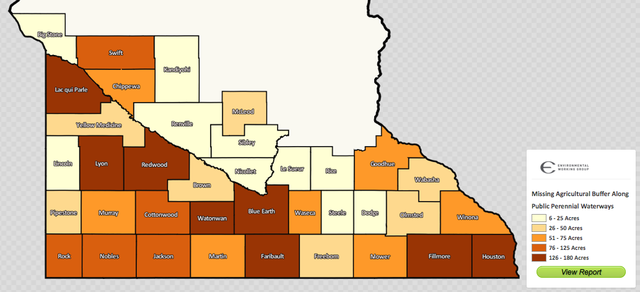Broken Stream Banks report

Counties in Southern Minnesota have a mixed record of enforcing longstanding stream buffer rules.
Image: EWG
The Environmental Protection Agency estimates that agricultural runoff degrades more than 125,000 miles of rivers and streams across the country. Here at home, we spend millions annually to protect our waters. But the simplest solution to water quality one that is already required by law often goes ignored in agricultural areas.
Our friends at the Environmental Working Group (EWG) recently released a groundbreaking report on the lack of filter strips along many of Minnesotas agricultural waterways. The report, entitled Broken Stream Banks, has launched a statewide conversation about the importance of enforcing stream buffer rules.
In Minnesota, longstanding shoreland management rules require a 50-foot wide filter strip between cropland and public waterways. These vegetative strips filter agriculture runoff pollution and slow water down before it reaches our surface waters.
Unfortunately, after seeing EWGs sophisticated satellite analysis, its clear that only 18% of Minnesotas streams have adequate agricultural buffers in place.
FMR continues to work with the Minnesota Pollution Control Agency, the Board of Water and Soil Resources, the Department of Natural Resources, and local governments to encourage effective monitoring and enforcement of stream buffer protections throughout the state.
For more information on Broken Stream Banks, please visit EWG.org.
The Star Tribune's Josephine Marcotty wrote an excellent story on the report and its findings. More great coverage comes the Mankato Free Press.